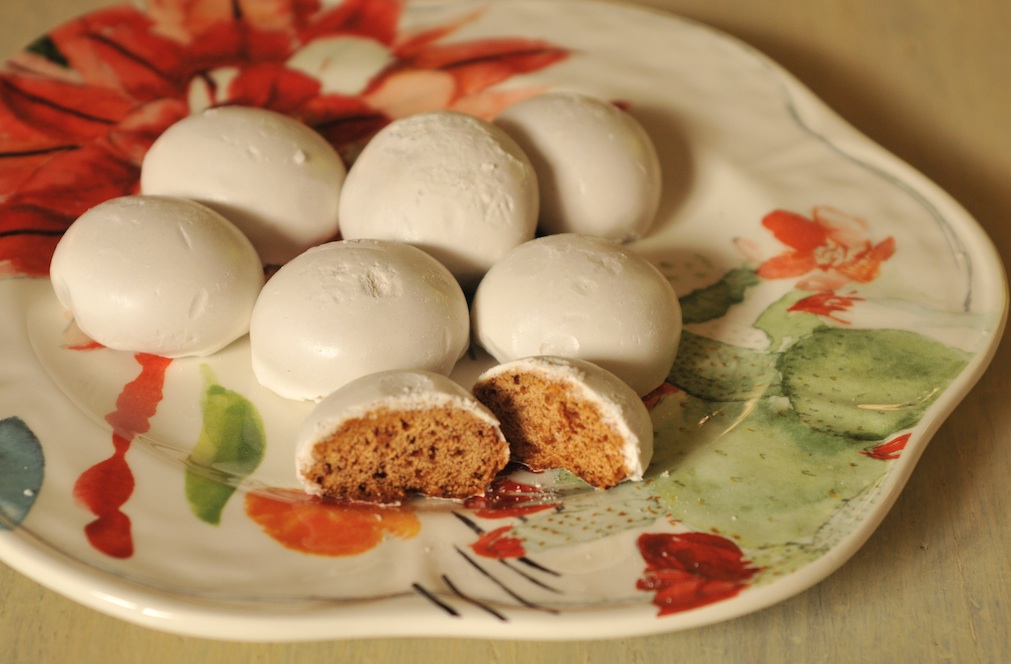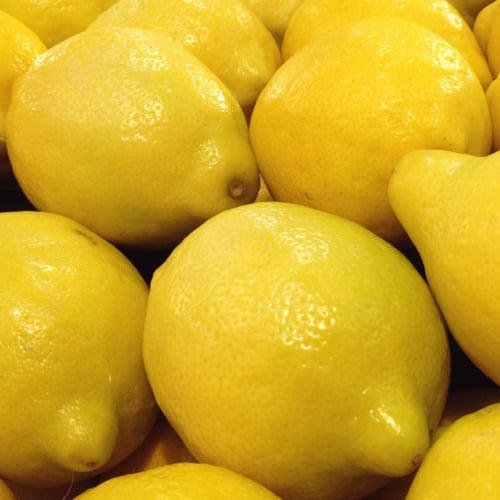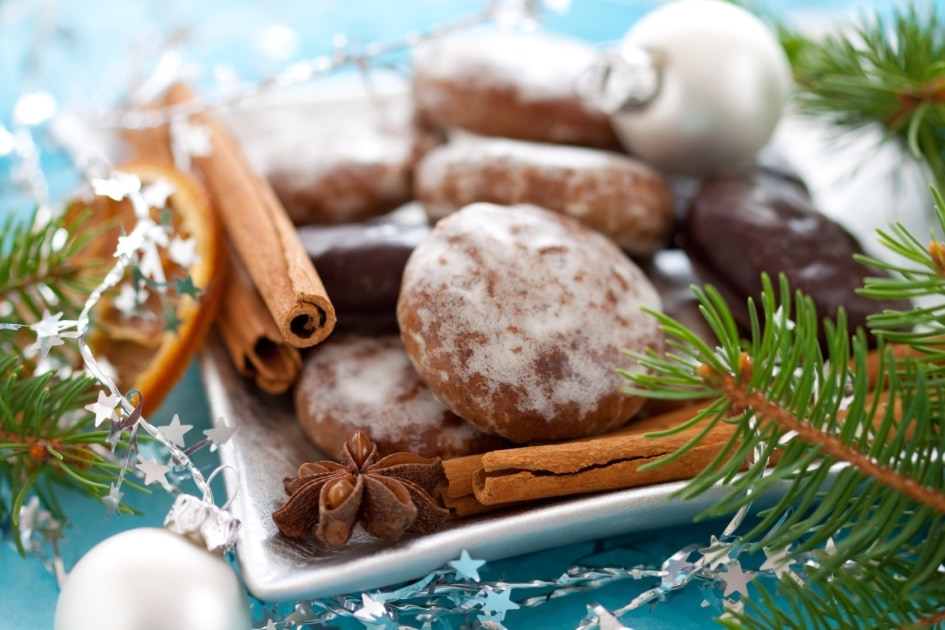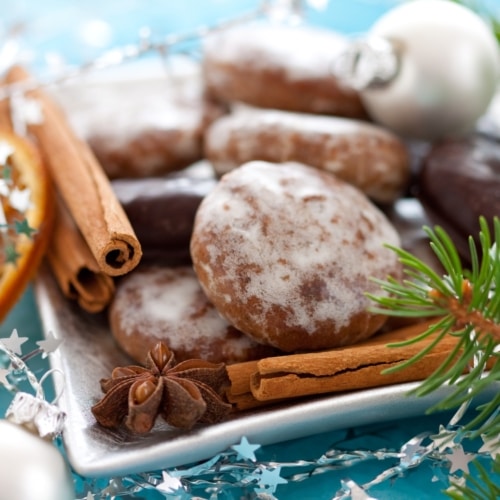The name literally means ‘peppernuts’, and does not mean it contains nuts. The cookies are roughly the size of nuts and can be eaten by the handful, which may account for the name. They are named for the pinch of pepper added to the dough before baking.

Getting Juice From LemonsTo get the most juice out of fresh lemons, bring them to room temperature and roll them under your palm against the kitchen counter before squeezing.


These tiny spice cookies are a popular treat in Holland, Germany and Belgium at the holidays. Try our authentic recipe and make it part of your festivities!

To many cultures, the holidays wouldn’t be complete without festive pfeffernüsse (pronounced fef-fer-noos). This tempting, traditional, tiny spice cookie appears in profusion just around the time the snow flies in Germany, Denmark, and The Netherlands, as well as in and around Mennonite communities in North America.
Popular since the 1850s, pfeffernüsse , also called pepernoten in Dutch, is linked to the December 5th feast of Sinterklaas in The Netherlands, when children receive gifts from St. Nicholas. It is celebrated the following day in Germany and Belgium. The word means “pepper nuts,” mostly because the piquant cookies are not much bigger than nuts, though they do not always contain them.
In the 19th century (and sometimes even today), connoisseurs incorporated potash, or potassium carbonate, into the dough, as well as ammonium carbonate, which acted as leavening agents to achieve the right consistency. While there are some variations on the theme—including the addition of anise, molasses, honey, nuts, nutmeg, ground black pepper, cardamom, rum, candied fruit, and powdered sugar for dusting— typically flour, sugar, brown sugar, cloves, and cinnamon are the more conventional ingredients. The flavor reportedly deepens with the passage of time, so many bakers prepare batches of them at the outset of the holiday season, relishing them throughout the month of December.
Why not herald the holidays and treat your family to this sweet, spicy, crunchy delicacy with the recipe below? Who knows, pfeffernüsse could become a much-anticipated holiday tradition in your house too!

- 1/2 teaspoon ground cinnamon
- 1/2 teaspoon ground cloves
- 1/2 teaspoon ground nutmeg
- 1/4 teaspoon freshly ground black pepper
- 1/4 teaspoon ground cardamom
- 1/4 teaspoon baking soda
- 1 1/4 cups white flour
- 1 1/4 cups whole wheat flour
- 1 cup dark brown sugar, packed
- 2 large eggs
- 1/3 cup walnuts, finely chopped
- 1/3 cup powdered sugar for rolling
- Preheat oven to 375º F. Prep 2 cookie sheets by spraying with cooking spray or lining with parchment paper.
- In a medium bowl, stir together dry ingredients: cinnamon, cloves, nutmeg, black pepper, ginger, cardamom, baking soda, white flour, and wheat flour.
- Using an electric mixer set on medium speed, beat together brown sugar and eggs until light and fluffy, about four minutes. Reduce the speed of the electric mixer to low. Gradually add the dry ingredients and beat until completely blended. Batter will be very dry and crumbly.
- Slowly add in the chopped walnuts and beat until combined. Using damp hands, pinch off dough in tablespoon amounts; roll into 1-inch balls. Arrange balls 1 1/2 inches apart on prepared baking sheets.
- Make sure your hands have water on them while rolling the balls – it will help to bind the dough together. Bake for 11 – 14 minutes, or until just starting to become golden.
- Transfer sheets to a wire rack to cool, about 15-20 minutes. Working in batches, carefully roll cookies in powdered sugar until covered completely. Let cool completely on wire rack. Store in an airtight container.
Beth Herman is a freelance writer with interests in healthy living and food, family, animal welfare, architecture and design, religion, and yoga. She writes for a variety of national and regional publications, institutions, and websites.
How to Pronounce Pfeffernüsse? (CORRECTLY) | German Spice Cookies Pronunciation
FAQ
What is the meaning of Pfeffernusse?
What is unusual about Pfeffernusse?
Is Pfeffernüsse the same as gingerbread?
Why does Pfeffernusse taste like licorice?
What does Pfeffernüsse mean?
Peffernüsse is a German word. Literally translated it means pepper nuts. The German word Pfeffernüsse (plural/feminine – die Pfeffernüsse / singular/feminine die Pfeffernuss) included the Umlaut “U” which looks like this “Ü”. Listen to the audio file below to learn how to pronounce the word the proper way. How To Pronounce “Pfeffernüsse”?
Where do Pfeffernüsse come from?
To many cultures, the holidays wouldn’t be complete without festive pfeffernüsse (pronounced fef-fer-noos). This tempting, traditional, tiny spice cookie appears in profusion just around the time the snow flies in Germany, Denmark, and The Netherlands, as well as in and around Mennonite communities in North America. What is Pfeffernüsse?
What are Pfeffernüsse cookies?
These delicious cookies with fine spices are one of the quick German classic Lebkuchen cookies in the Advent season. Pfeffernüsse are a classic German gingerbread treat around the holidays. Read our article to find out how this traditional Christmas cookies got it´s interesting, but misleading name. What Are Pfeffernusse Cookies?
Why do Germans eat Pfeffernüsse?
In Germany, Pfeffernüsse are associated with Christmas. The cookie has been part of yuletide celebrations since the 1850s. The name literally means ‘peppernuts’, and does not mean it contains nuts. The cookies are roughly the size of nuts and can be eaten by the handful, which may account for the name.
